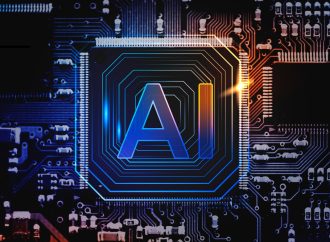In recent years, machine learning has become the talk of the town. So much so that virtually everyone—from tech giants to budding entrepreneurs—is jumping on this bandwagon. But what is machine learning? How does it work? In this blog post, we’ll take a look at the basics of machine learning and explore some of its
In recent years, machine learning has become the talk of the town. So much so that virtually everyone—from tech giants to budding entrepreneurs—is jumping on this bandwagon. But what is machine learning? How does it work? In this blog post, we’ll take a look at the basics of machine learning and explore some of its applications. We will also provide some helpful resources to help you get started with your own machine learning project. Whether you’re a programmer, a data scientist or just curious about this technology, this article should give you a good overview of the concept.
What is machine learning?
Machine learning is a subfield of artificial intelligence that deals with the construction and study of algorithms that can learn from data. These algorithms are used to build models that can make predictions or recommendations based on new data. Machine learning is closely related to statistics, but it also draws from other fields such as computer science, information theory, and optimization.
The goal of machine learning is to create algorithms that can automatically improve given more data. This is in contrast to traditional statistical models, which require extensive hand-tuning and often fail to improve given more data. Machine learning is a powerful tool for dealing with complex problems that are difficult to solve using traditional methods.
Machine learning algorithms can be divided into three categories: supervised learning, unsupervised learning, and reinforcement learning. Supervised learning algorithms learn from labeled training data and make predictions about new data. Unsupervised learning algorithms learn from unlabeled data and try to find patterns in the data. Reinforcement learning algorithms interact with an environment in order to learn how to maximize a reward function.
There are many different types of machine learning algorithms, each with its own strengths and weaknesses. The most commonly used algorithm families are decision trees, support vector machines, neural networks, Bayesian methods, and instance-based methods. New algorithms are constantly being developed as researchers attempt to solve different problems with machine learning.
The different types of machine learning
There are three main types of machine learning: supervised, unsupervised, and reinforcement learning. Supervised learning is where the computer is given a set of training data, and it is then able to learn and generalize from that data. Unsupervised learning is where the computer is given data but not told what to do with it, and so it has to try to find structure in the data itself. Reinforcement learning is where the computer is given a goal or reward function and has to learn how to best achieve that goal.
An example of machine learning in action
Machine learning is a branch of artificial intelligence that deals with the design and development of algorithms that can learn from and make predictions on data.
Some common examples of machine learning in action are:
-Autonomous vehicles that can learn to navigate roads and traffic patterns
-Fraud detection systems that can learn to identify suspicious activity
-Speech recognition systems that can learn to understand different accents and dialects
-Recommendation engines that can learn to provide personalized recommendations
Benefits and drawbacks of machine learning
There are a number of benefits and drawbacks to machine learning. On the plus side, machine learning can be used to automatically identify patterns in data and make predictions about future events. This can save businesses a lot of time and money by reducing the need for manual analysis. Machine learning can also improve the accuracy of predictions by constantly being exposed to new data.
On the downside, machine learning is often viewed as a black box due to its lack of transparency. It can be difficult to understand how or why a machine learning algorithm makes certain decisions. This lack of explainability can be a problem when trying to build trust with customers or regulators. Additionally, machine learning algorithms can be biased if they are not trained on a diverse set of data. This can lead to inaccurate predictions that unfairly penalize certain groups of people.
Conclusion
Machine learning is an increasingly important field of technology that has the potential to revolutionize many industries. By understanding the basics of this powerful tool, you can begin to explore its various applications and understand how it could be a game-changer for your business. With so much potential still untapped, now is a great time to start brushing up on your knowledge about machine learning and get ahead of the competition.





















Leave a Comment
Your email address will not be published. Required fields are marked with *